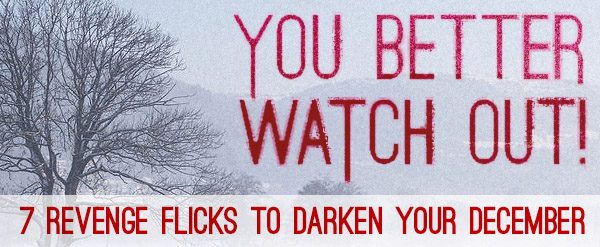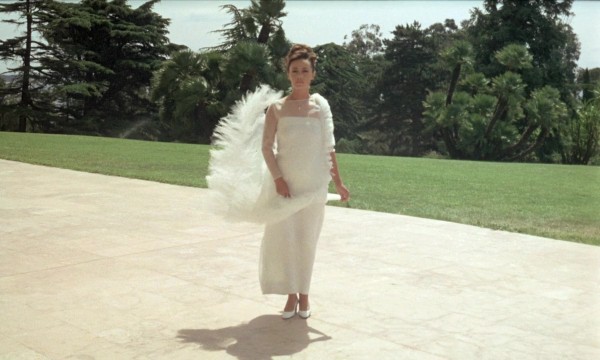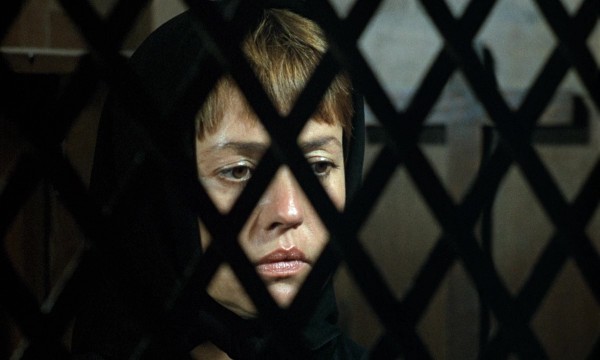
You better watch out. Better not cry, sucker. Because this month we’re taking a look at seven examples of cinematic revenge — the bloodier, the better.
Part 3: The Bride Wore Black
Like any boorish American, I give the French a lot of unnecessary guff. It’s not that I have any genuine beef — I’m sorry, bouef — with the French, it’s just that I’ve grown up in a culture that finds them an easy comedic target. It doesn’t help when a lot of their cinema is known for being extremely staid, talky, and overly self-serious, often involving characters copiously expounding their philosophies on anything from love to class to food and back to love again. I’m glad that those kinds of films have their audience, but I very rarely count myself among their number.
However, not all French cinema falls into such a stereotypical category, and one of the country’s most heralded filmmakers, François Truffaut, is a shining example of this. With films like The 400 Blows, Truffaut is able to retain his distinct cultural identity while crafting stories and characters that move with breathtaking modernity. It doesn’t hurt that he’s willing to make a pretty good adaptation of Ray Bradbury’s Fahrenheit 451 or pop up in Spielberg’s Close Encounters of the Third Kind either, stripping away this comical composite image of “the French artiste” that my mind has constructed over the years.
So when the time came to pick a film for this series, I decided I wanted to delve into a part of the world whose cinema I had mostly ignored (I have found myself enjoying films from Jean-Pierre Melvile, Jean-Pierre Jeunet, and Henri-Georges Clouzot), and when I saw that Truffaut had a revenge flick in his filmography, I was ecstatic. The Bride Wore Black was catnip to me based on the premise alone: a mysterious woman hunts and kills five disparate men who somehow wronged her in the past. If that wasn’t a big enough selling point, The Bride Wore Black was the film Truffaut made after publishing a book of his essential interviews with Alfred Hitchcock, and Truffaut intended the film to be an homage to the master of suspense. Truffaut adapted a novel written by the author of Rear Window and even snagged Bernard Herrmann to do the score (which is notable for turning Mendelssohn’s classic wedding march into something resembling a funeral dirge). In a way, Truffaut was making a fan film and there’s something extremely endearing about that.
The Bride Wore Black is the most ethereal of Truffaut’s pictures that I’ve seen, especially in the beginning. Our revengeancer, Julie (Jeanne Moreau), is introduced attempting to kill herself but is stopped by her mother. Shortly after that, she is stalking husband-to-be Bliss (Claude Rich) up to his apartment. Julie is presented as a phantom, wearing a white evening dress that looks like a death shroud and conversing with people with the steeliest of gazes. During a party, she just stands on one side of the room and leers at Bliss for what seems like an eternity. It’s enticingly creepy and immediately turns into straight badassery when she walks out onto the balcony and purposefully throws her scarf onto an overhanging pole for Bliss to receive. Just as he reaches out to grab it, she tells Bliss her name, and as quickly as we see his shocked reaction, Julie pushes him over the ledge and hightails it out of there.
And really, Julie’s systematic revenge is the entire film. There’s not much deviation except to slowly reveal why it is she’s knocking these guys off. When it’s finally shown in full, it’s one of the most tragically comic reasons for revenge I think I’ve ever seen. On Julie’s wedding day, these five doomed souls got together to drink and cavort together, and one of them thought it would be fun to point a rifle out a window. When one of the guys sees this, he runs to yank the gun away and in doing so accidentally kills Julie’s husband on the steps of the church where they just got married. That would be my kind of luck on my wedding day.
If I’m being honest, The Bride Wore Black is somewhat rote when it comes to scratching my revenge film itch. Julie goes about some really long-winded ways of capping these gents, including pretending to be a boy’s schoolteacher and even doing multiple days of modeling work for one of her victims. It’s these drawn out chunks that slow down the movie’s momentum, and it’s a shame since she achieves the same desired goal (murder thanks to impersonation/seduction) with her second kill. It doesn’t help that one of her kills is so amazing stupid: she locks a guy in a little room under a staircase and then duct tapes the cracks in the door shut, suffocating the guy inside. LAME.
Still, Truffaut is a master for a reason, and The Bride Wore Black feels like it could have been made today. There’s a lot of rapid fire editing that captures the harshness of Julie’s character well, and Jeanne Moreau is entrancingly cold-hearted. When she goes to confess her sins to a priest (because you gotta have that scene), she chillingly says that her revenge isn’t a mission, it’s a job. There’s a bleak and humorless tone to the entire film that also feels different from a lot of cathartic revenge flicks.
It’s also eerie that The Bride Wore Black has some choice elements that seem like they were pilfered by Tarantino for Kill Bill, but Tarantino says he hadn’t seen the film when he made his multi-part revenge movie. Other than the obvious matrimonial connection, Julie has a list of names that she checks off while she’s traveling to the next victim, and one of them even gets away from her grasp thanks to the police, leaving her to write a question mark next to his name. That immediately brought to mind the ambiguous fate of Elle Driver and her on-screen question mark.
Thankfully, The Bride Wore Black goes out on the highest of notes. I won’t spoil it here because it really is worth watching the whole movie for, and even though it’s comparatively sluggish to the kinds of revenge flicks I dig (give me Darkman any day), it’s shot and performed admirably. Those Frenchies ain’t half bad.
Drew’s Rating: 




Out of a Possible 5 Stars
Previous Installments of You Better Watch Out!
Part 2: Orca — Shannon Hubbell
Part 1: Lady Snowblood — Travis Newton

